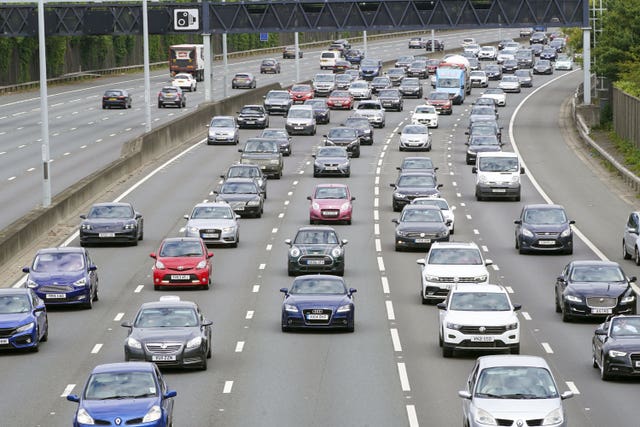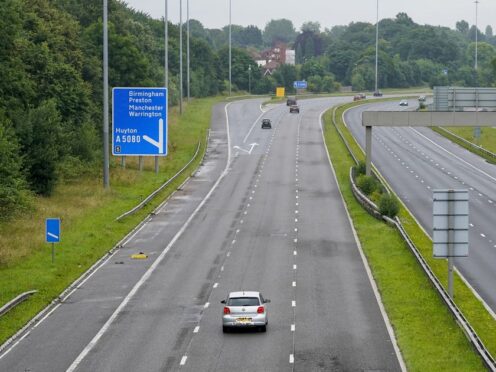Nearly one in three drivers admits to middle lane hogging on motorways, a survey suggests.
Some 32% of respondents to a poll commissioned by National Highways said they do this at least “occasionally”, including 5% who confessed to “always” doing it.
More than a fifth (23%) of those questioned said they tailgate, which the RAC described as “frightening”.
The Highway Code states drivers on motorways and dual-carriageways should use the left lane unless they are overtaking, and allow “at least a two-second gap between you and the vehicle in front on high-speed roads”.
National Highways has launched a campaign with the slogan “little changes, change everything”, which warns of the impact of middle lane hogging and tailgating.
The Government-owned company said poor lane discipline is among the behaviours most likely to cause other road users to feel frustrated, while tailgating often makes people feel anxious, stressed or unsafe.
Both offences can be prosecuted as careless driving, for which police can hand out £100 on-the-spot fines and three penalty points.
Department for Transport figures show 198 people were killed and a further 6,730 were seriously injured in crashes on Britain’s roads in the 10 years to the end of 2022 in which a vehicle “following too close” was a contributory factor.
National Highways director of road safety Sheena Hague said: “Bad habits can make driving on our motorways a challenging experience, as those who lane hog or tailgate frustrate other drivers and make them feel unsafe. Both are dangerous and can cause accidents.
“Our campaign aims to motivate motorists to embrace little changes, which will have an overall positive effect on both them and their fellow road users, reduce congestion and keep traffic flowing.
“The message is simple: always allow plenty of room between you and the vehicle in front, and unless overtaking move into the left-hand lane.”

Roads minister Guy Opperman said: “This Government is on the side of drivers and is listening to their concerns.
“That’s why this campaign, as part of our Plan for Drivers, aims to tackle middle lane hogging and tailgating, which are not only irritating but dangerous too.”
AA president Edmund King said: “Considerate driving is not just about being kind, but it is about keeping safe.
“The top five types of drivers loathed by AA members are the tailgaters, the lane hoggers, the phone abusers, the lane swoopers, and the undertakers.
“All these activities are dangerous and indeed stressful for the perpetrators as well as other drivers.
“Sadly, some people seem to change personalities when cocooned in their metal boxes on wheels.”
RAC road safety spokesman Rod Dennis said: “Middle lane hogging and tailgating are far more than mere annoyances for drivers – these actions put everyone on the roads at risk.
“Closely following another motorist could easily result in a serious collision should the driver ahead need to brake sharply for any reason.
“The fact nearly one in four drivers surveyed admit to doing so on some of England’s fastest and busiest roads is frightening.”
– The survey of 2,500 people in England was conducted by research company Ipsos UK in July 2023.
